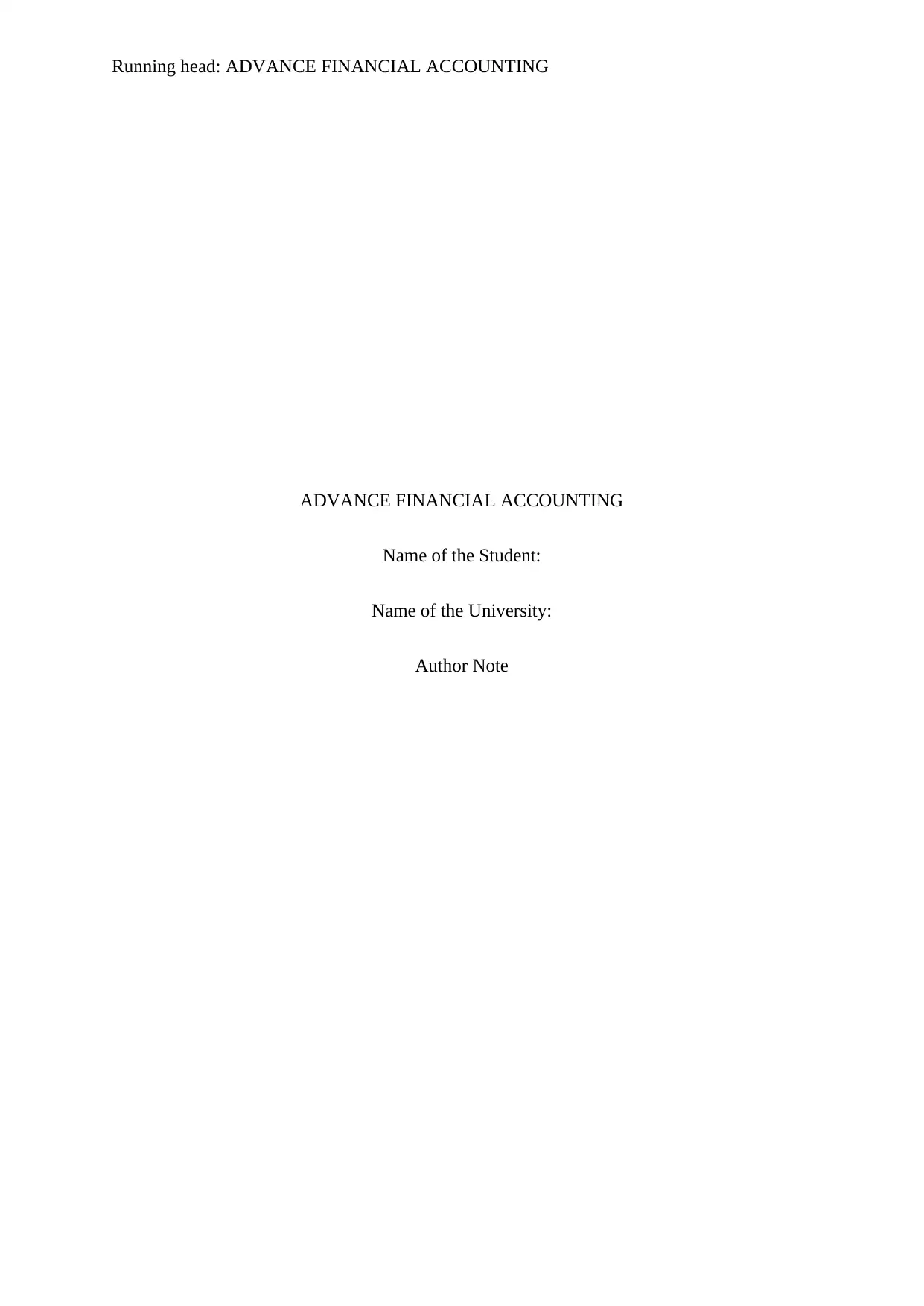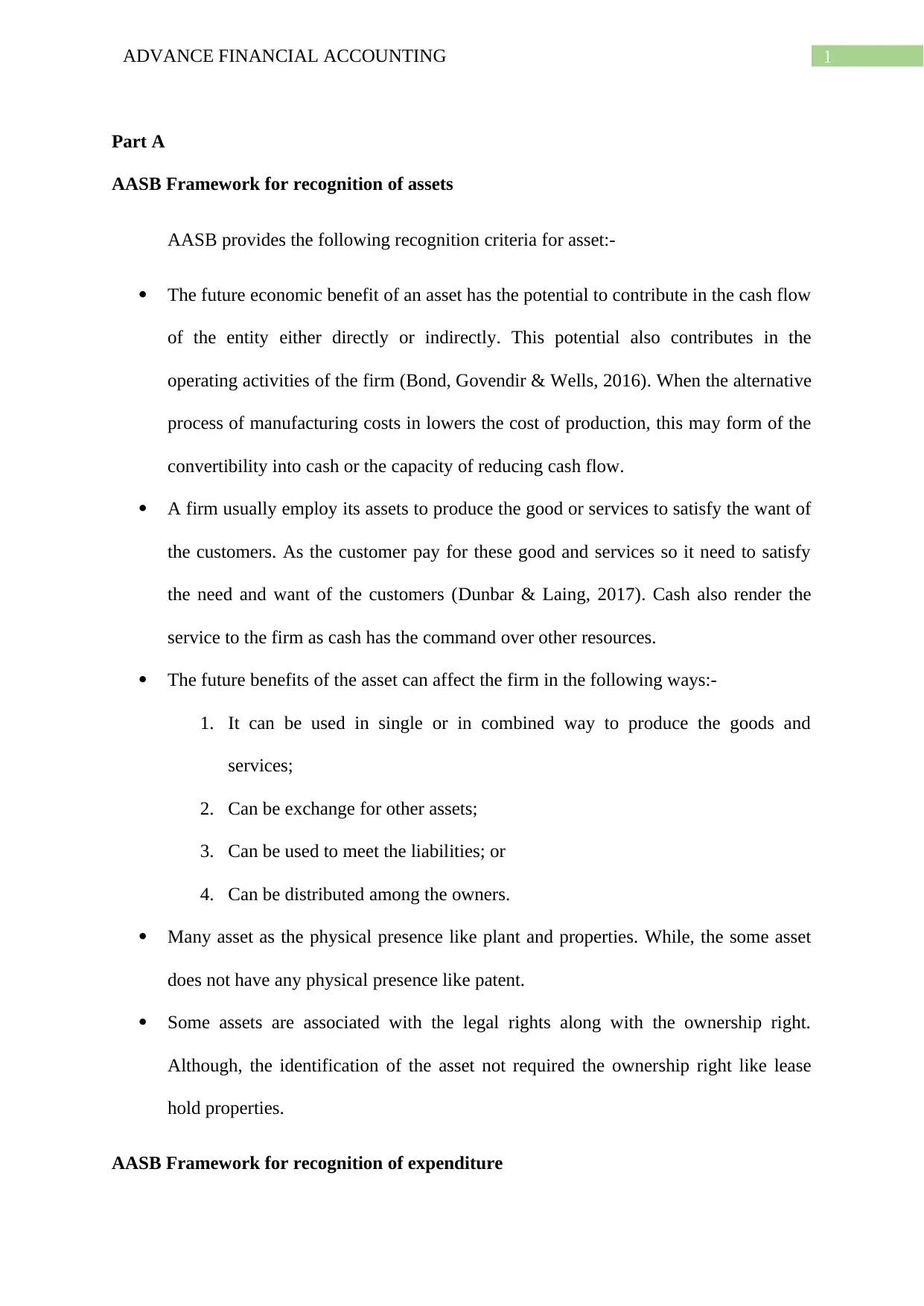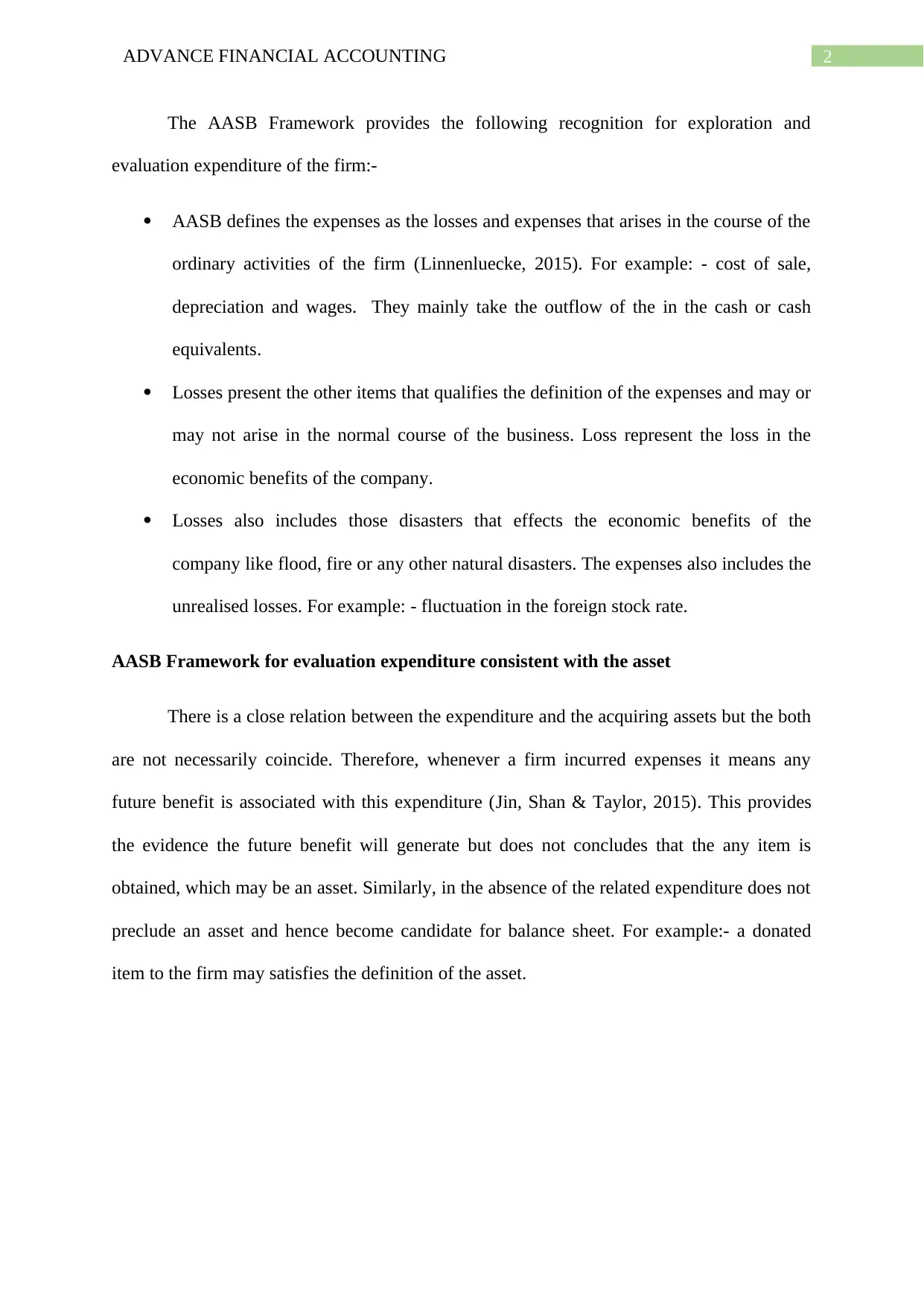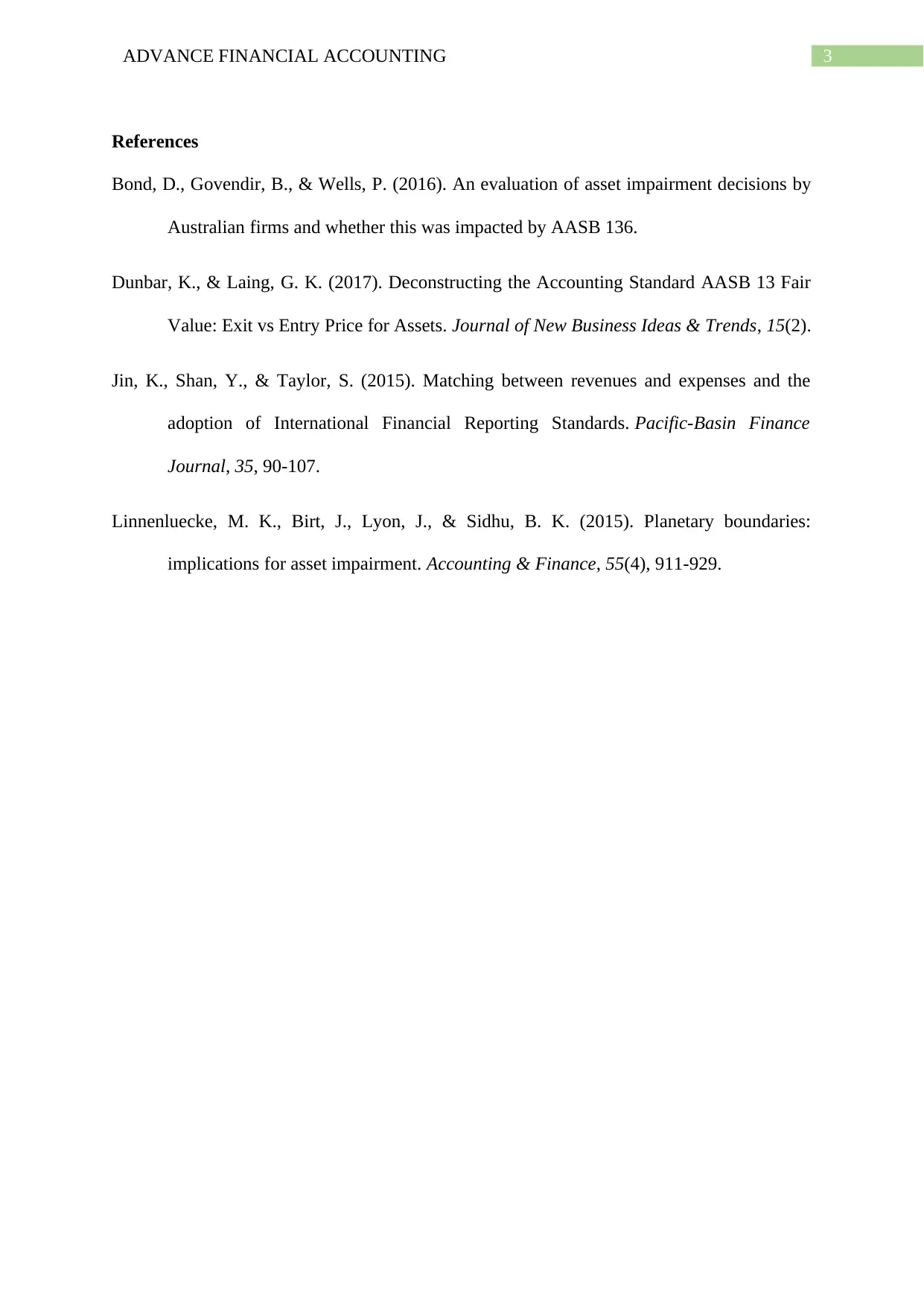BAC301: Advanced Financial Accounting - Asset Recognition Case Study
VerifiedAdded on 2023/01/06
|4
|749
|39
Case Study
AI Summary
This case study delves into the AASB framework, specifically focusing on the recognition criteria for assets and expenditure, as outlined in the provided assignment brief. The analysis examines how AASB 6 elaborates on the definition and recognition of assets, including the future economic benefits and the ways in which assets contribute to a firm's operations. The study also explores the recognition of exploration and evaluation expenditure, highlighting its relationship with asset acquisition and the distinction between expenditure and the existence of an asset. The assignment covers the criteria for asset recognition, expenditure evaluation, and the close relationship between the two, providing a comprehensive overview of the accounting standards. References to relevant academic literature are included to support the analysis.
1 out of 4











![[object Object]](/_next/static/media/star-bottom.7253800d.svg)